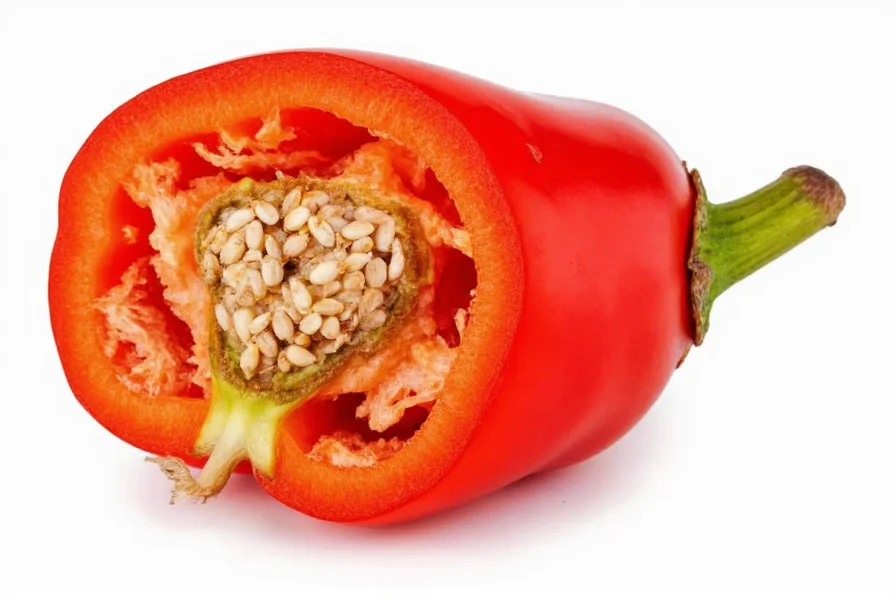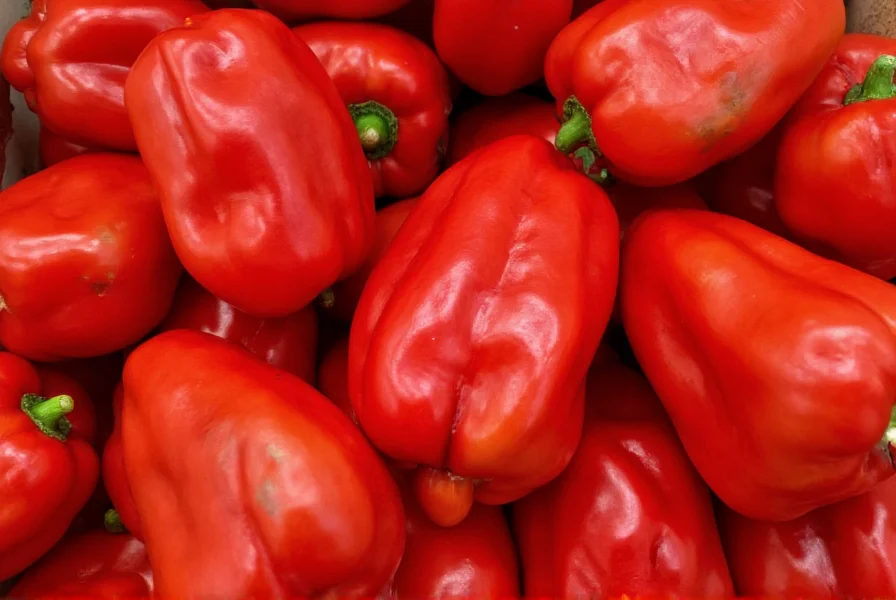Understanding where Fresno peppers fall on the Scoville scale helps home cooks and culinary professionals make informed decisions about their use in recipes. Unlike some chili varieties that have a narrow heat range, Fresno peppers exhibit notable variability depending on growing conditions, ripeness, and even individual pod differences.
Understanding Fresno Pepper Heat Characteristics
Fresno peppers (Capsicum annuum) share genetic lineage with jalapeños but have developed distinct characteristics through selective breeding. Their heat level follows a predictable pattern as they mature:
- Green stage: Typically milder at 2,500-5,000 SHU, with grassy notes
- Transitional stage (orange): Moderate heat around 5,000-7,000 SHU
- Red stage: Fully mature with heat reaching 7,000-10,000 SHU and pronounced fruitiness
This maturation pattern explains why some recipes specify "red Fresno peppers" when a more pronounced heat and flavor are desired. The heat compounds (capsaicinoids) increase as the pepper ripens, though not as dramatically as in some other varieties.

Pepper Heat Scale Comparison
| Pepper Variety | Scoville Heat Units (SHU) | Heat Level | Comparison to Fresno |
|---|---|---|---|
| Bell Pepper | 0 SHU | Mild | 0x Fresno heat |
| Poblano | 1,000-2,000 SHU | Mild | ½ to ⅔ milder than green Fresno |
| Fresno (Green) | 2,500-5,000 SHU | Medium | Baseline |
| Jalapeño | 2,500-8,000 SHU | Medium | Very similar to green Fresno |
| Fresno (Red) | 7,000-10,000 SHU | Medium-Hot | Baseline |
| Serrano | 10,000-23,000 SHU | Hot | 1.5-2x hotter than red Fresno |
| Habanero | 100,000-350,000 SHU | Very Hot | 10-35x hotter than red Fresno |
Factors Affecting Fresno Pepper Heat Levels
Several variables influence where an individual Fresno pepper falls within its heat range:
Growing conditions: Stressors like inconsistent watering, temperature fluctuations, and nutrient deficiencies can increase capsaicin production. Well-cared-for plants typically produce milder peppers within the expected range.
Ripeness: As mentioned earlier, red Fresnos consistently test hotter than their green counterparts. The longer they stay on the vine, the more complex sugars develop alongside capsaicinoids.
Individual variation: Even on the same plant, heat levels can vary significantly between pods. The seeds and white pith contain the highest concentration of capsaicin, so how you prepare the pepper affects perceived heat.

Practical Applications in Cooking
Knowing the fresno pepper heat level comparison to other chilies helps in recipe development and substitution. When working with Fresnos:
- For mild applications: Use green Fresnos, remove seeds and membranes, and pair with dairy or acid to balance heat
- For medium heat: Use red Fresnos with some seeds intact for salsas and sauces
- Substitution guide: Replace jalapeños with green Fresnos for similar heat with more fruitiness; use red Fresnos when a recipe calls for milder serranos
Chefs appreciate Fresno peppers for their versatility—they can stand in for jalapeños when a fruitier profile is desired, or serve as a less intense alternative to serranos. Their thinner walls compared to jalapeños also make them excellent for pickling and blending into smooth sauces.
Common Misconceptions About Fresno Pepper Heat
Several myths persist about Fresno pepper heat characteristics:
Misconception: Red Fresnos are a different variety than green Fresnos.
Reality: They're the same pepper at different maturity stages—red Fresnos are simply fully ripened green Fresnos.
Misconception: Fresnos are always hotter than jalapeños.
Reality: While red Fresnos often reach higher heat levels, green Fresnos typically match jalapeños in heat intensity with different flavor notes.
Misconception: All Fresnos from the same grocery store batch will have identical heat.
Reality: Significant variation exists even within commercially sold batches due to natural biological variation.
Measuring Heat in Your Kitchen
Without laboratory equipment, you can gauge Fresno pepper heat through practical methods:
- Visual inspection: Thinner walls and more pronounced striations often indicate higher heat potential
- Smell test: Stronger, sharper aroma suggests higher capsaicin content
- Taste test (carefully): Start with a tiny piece of the pepper wall (avoiding seeds), wait 30 seconds, then decide if more heat is needed
Remember that individual heat perception varies significantly—what seems mild to one person might be hot to another. When cooking for others, always provide heat customization options like extra peppers on the side.
Conclusion
Fresno peppers offer a versatile medium heat range (2,500-10,000 SHU) that makes them valuable in many culinary applications. Understanding their position on the fresno pepper heat scale compared to other chilies allows for more precise recipe execution and substitution. Whether you're using green Fresnos for their grassy notes or red Fresnos for their fruity heat, these peppers provide reliable medium-level spice with distinctive flavor characteristics that set them apart from similar varieties like jalapeños.
Frequently Asked Questions
How does Fresno pepper heat compare to jalapeño?
Green Fresno peppers typically match jalapeños in heat (2,500-5,000 SHU), while red Fresnos often reach 7,000-10,000 SHU, making them slightly hotter than most jalapeños. However, the flavor profile differs—Fresnos offer more fruitiness compared to jalapeños' grassier notes.
Are red Fresno peppers significantly hotter than green ones?
Yes, red Fresno peppers are typically 30-50% hotter than their green counterparts. As they mature and change color, capsaicin concentration increases, moving from 2,500-5,000 SHU when green to 7,000-10,000 SHU when fully red. The red version also develops more complex fruity flavors.
Can I substitute Fresno peppers for jalapeños in recipes?
Absolutely. Green Fresnos make an excellent 1:1 substitute for jalapeños with similar heat but more fruitiness. For recipes calling for red jalapeños, red Fresnos work perfectly. If you prefer milder heat, use green Fresnos with seeds removed; for more heat, include some seeds from red Fresnos.
Why do some Fresno peppers taste hotter than others?
Natural variation in pepper heat occurs due to growing conditions, plant stress, and individual biological differences. Even on the same plant, some pods develop more capsaicin than others. The seeds and white pith contain the highest concentration of heat compounds, so how you prepare the pepper significantly affects perceived heat.
How can I reduce the heat of Fresno peppers in cooking?
To reduce heat, remove all seeds and white membranes (placenta), which contain most capsaicin. Soaking sliced peppers in salt water for 15-30 minutes can also draw out some heat compounds. Cooking with dairy products like cheese or sour cream helps counteract capsaicin's effects, as does adding acid from lime or vinegar.











 浙公网安备
33010002000092号
浙公网安备
33010002000092号 浙B2-20120091-4
浙B2-20120091-4